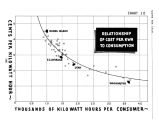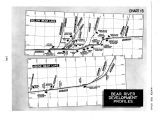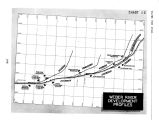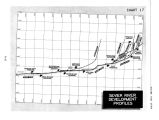| OCR Text |
Show WATER FOR UTAH The by- product coke ovens of Utah provide important chemicals for the West's industries. At the Ironton and Geneva plants in 1947 there was produced, in addition to coke and coke- breeze, almost two billion cubic feet of coke- oven gas ( used in the adjoining iron and steel operations and also sold to nearby communities for domestic and commercial heating purposes); 43,- 000,000 pounds of ammonium sulphate; 18,- 000,000 gallons of coal tar; over 7,000,000 gallons of crude light oils; and substantial amounts of phenolates, benzol, toluol, xylol, naphtha and nap- fhalene. Over 66,000 tons of coke- by- product chemicals were shipped from these two plants in 1946. Nearly all of the ammonium sulphate produced at these ovens were sold for fertilizer in Utah. The benzol, toluol and xylol were consumed in western chemicals, plastics, synthetic rubber, paint and lacquer industries. The current construction of a low- temperature coal charring plant in the heart of the Carbon County coal fields is an important precursor of a new and potential coal treating industry which will extend greatly Utah's production of industrial and domestic carbon and coal chemicals. Another plant is also being seriously considered in the Salt Lake area. . . . The Potentials of Utah's Coal Industries . . . The coal reserves of the Utah, Wyoming, Colorado and New Mexico districts bulwark the West's future. Although there are other coal deposits in the West, such as those of the State of Washington, their undoubted importance does opt match that of Utah's for total reserves, quality and ease of mining. The growing scarcity of petroleum and natural gas fuels, particularly in Pacific Coast areas, will stimulate greatly Utah's coal mining and out- of- state shipments. Population growth will compound demands upon its reserves. In addition, the expansion of chemical and metallurgical industries in the entire West will demand increasingly large quantities of high quality coal, coke and suitable chars. The importance of coke, for example, is exemplified above: POUNDS OF COKE REQUIRED PER TON OF IMPORTANT INDUSTRIAL PRODUCTS Pig Iron 1500- 3000 Calcium carbide 1400 Ferrosilicon 330 - 2240 Ferrochromium 765 Ferromanganese 580 Iron ore smelting ( electric furnace) L... 790 Silico manganese 1400 Silicon carbide _ ... 2300 Graphite 2000 Phosphorus 2600 Synthetic ammonia 3560 Of great potential importance in the use of Utah's coals, however, is the production of synthetic liquid fuels. As it has been pointed out, national domestic petroleum and natural gas reserves are being drawn upon to a point where it is now clearly imperative to stimulate the establishment of a full- fledged industry for the treatment of coal and oil shales for the manufacture of liquid fuels such as gasoline, light and heavy oils. The national task of providing required commercial amounts of synthetic liquid fuels from coal and oil shales is a fabulous one. Although the techniques for hydrogenation and synthesis are fairly well advanced, there is much work to be done for large- scale commercial utilization. The production of 2,000,000 barrels of oil per day, or a little more than one- third of the national current daily consumption of petroleum products, would require 16,000,000 tons of steel, an investment of $ 1,200,000,000 for mines, $ 9,000,- 000,000 for synthetic processing plants and the employment of 104,000 men in coal mining and 114,000 men in plant operations. The scale of mining alone would be greater than in the present total national coal mining industry. However staggering these estimates may be, the national petroleum situation is an inexorable one which can stand no delays in the development of a synthetic liquid fuels industry if the Nation is to remain secure. A sizeable portion of the future national synthetic liquid fuels industry is likely to become established in Utah because of the unusually favorable characteristics of its coals and those of Wyoming and Colorado. In addition, the demands of the West Coast for industrial and domestic consumption, together with the impera- ] |

















































































































































